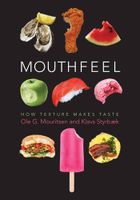Advertisement
Gellan Gum
By Ole Mouritsen and Klavs Styrbæk
Published 2017
Gellan gum contains sour polysaccharides, isolated from cultures of the bacteria Pseudomonas elodea. It comes in forms that have both short and long polysaccharides, which have different gelling and melting properties. As these polysaccharides are not branched, but can form cross-linked networks in water, gellan gum can be used to gel food products. For this reason it is often used as a substitute for more costly hydrogels, such as agar, carrageenan, and alginate. Only half as much gellan gum as agar is required to form a gel, which it can do in concentrations as small as 0.1 percent. Opinions differ as to whether it is best first to dissolve the gellan gum in cold or in warm water. But the gelling process does require heating and the presence of acid and positive ions—for example, calcium ions. Gels made with it can become very stiff and some are stable to temperatures of up to 248°F (120°C). As they are quite fragile, they break apart easily in the mouth, giving the impression that the gel is melting and releasing aroma and taste substances. When they are stirred, liquid gels can be created. The mouthfeel of foods thickened with gellan gum is clean and creamy.

